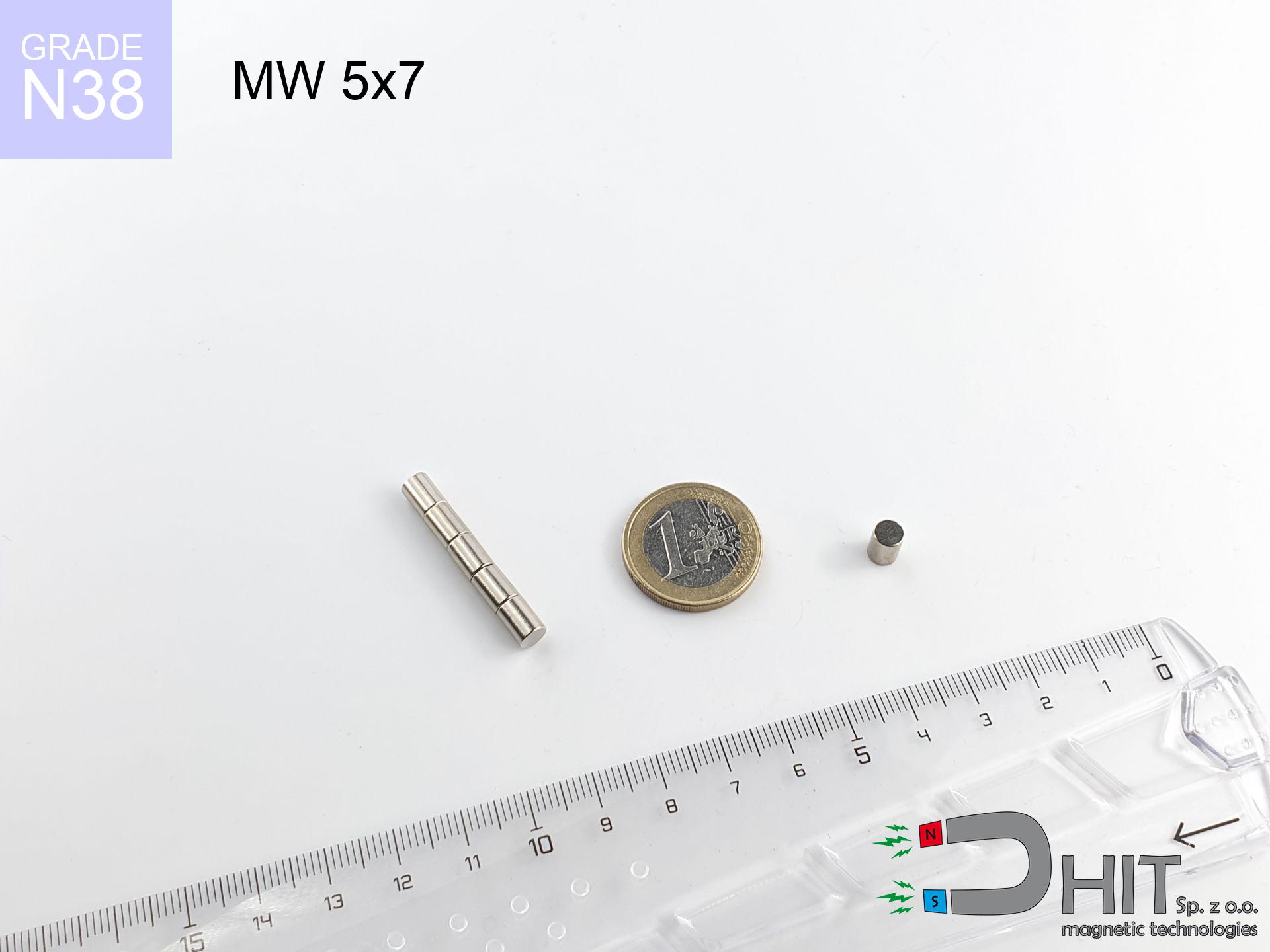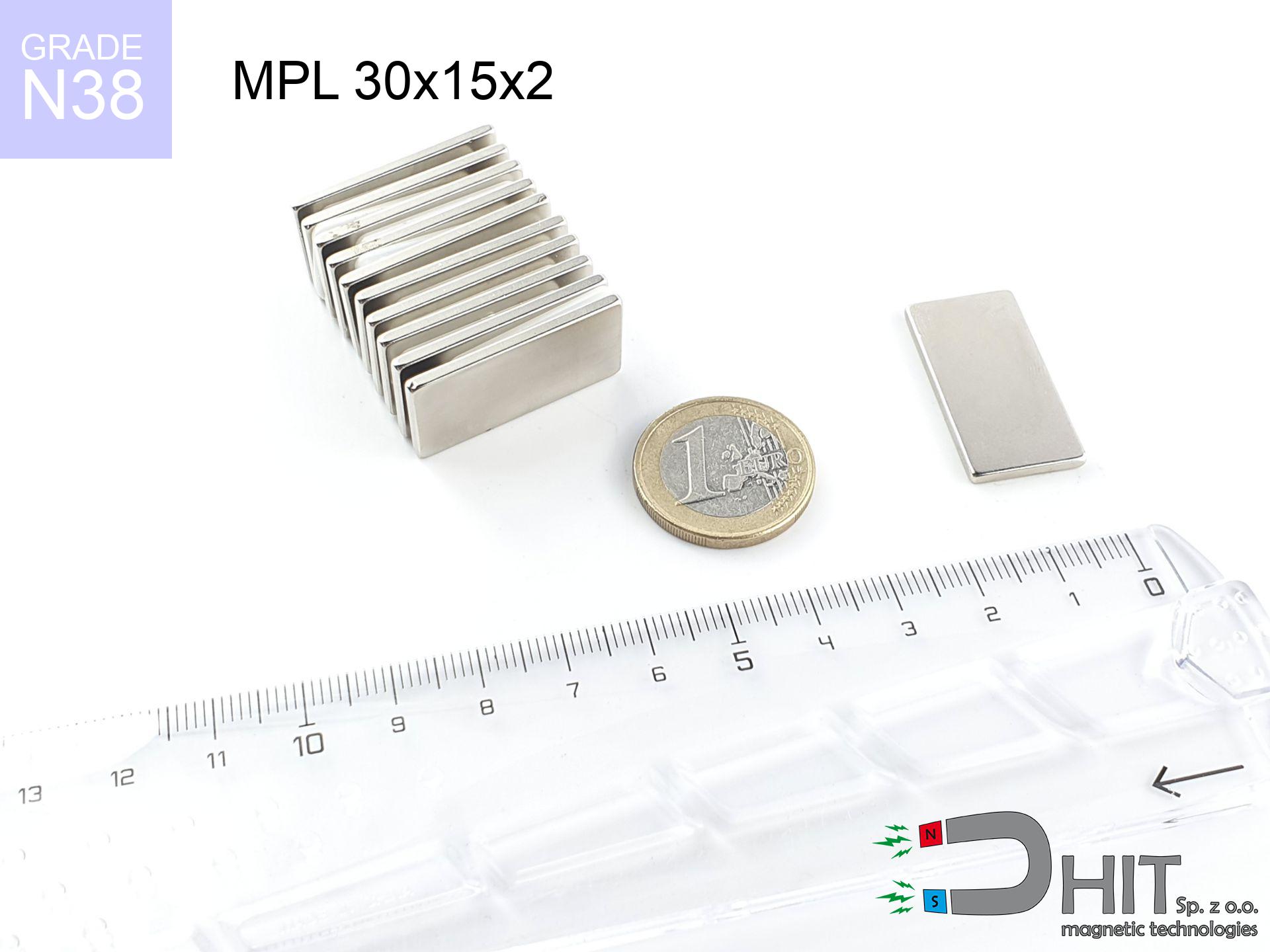SM 32x250 [2xM8] / N42 - magnetic separator
magnetic separator
Catalog no 130299
GTIN/EAN: 5906301812920
Diameter Ø
32 mm [±1 mm]
Height
250 mm [±1 mm]
Weight
1240 g
Magnetic Flux
~ 8 000 Gauss [±5%]
750.30 ZŁ with VAT / pcs + price for transport
610.00 ZŁ net + 23% VAT / pcs
bulk discounts:
Need more?
Pick up the phone and ask
+48 888 99 98 98
alternatively contact us using
our online form
the contact form page.
Weight as well as form of magnetic components can be tested using our
force calculator.
Orders submitted before 14:00 will be dispatched today!
Physical properties - SM 32x250 [2xM8] / N42 - magnetic separator
Specification / characteristics - SM 32x250 [2xM8] / N42 - magnetic separator
| properties | values |
|---|---|
| Cat. no. | 130299 |
| GTIN/EAN | 5906301812920 |
| Production/Distribution | Dhit sp. z o.o. |
| Country of origin | Poland / China / Germany |
| Customs code | 85059029 |
| Diameter Ø | 32 mm [±1 mm] |
| Height | 250 mm [±1 mm] |
| Weight | 1240 g |
| Material Type | Stainless steel AISI 304 / A2 |
| Magnetic Flux | ~ 8 000 Gauss [±5%] |
| Size/Mount Quantity | 2xM8 |
| Polarity | circumferential - 9 poles |
| Casing Tube Thickness | 1 mm |
| Manufacturing Tolerance | ±1 mm |
Magnetic properties of material N42
| properties | values | units |
|---|---|---|
| remenance Br [min. - max.] ? | 12.9-13.2 | kGs |
| remenance Br [min. - max.] ? | 1290-1320 | mT |
| coercivity bHc ? | 10.8-12.0 | kOe |
| coercivity bHc ? | 860-955 | kA/m |
| actual internal force iHc | ≥ 12 | kOe |
| actual internal force iHc | ≥ 955 | kA/m |
| energy density [min. - max.] ? | 40-42 | BH max MGOe |
| energy density [min. - max.] ? | 318-334 | BH max KJ/m |
| max. temperature ? | ≤ 80 | °C |
Physical properties of sintered neodymium magnets Nd2Fe14B at 20°C
| properties | values | units |
|---|---|---|
| Vickers hardness | ≥550 | Hv |
| Density | ≥7.4 | g/cm3 |
| Curie Temperature TC | 312 - 380 | °C |
| Curie Temperature TF | 593 - 716 | °F |
| Specific resistance | 150 | μΩ⋅cm |
| Bending strength | 250 | MPa |
| Compressive strength | 1000~1100 | MPa |
| Thermal expansion parallel (∥) to orientation (M) | (3-4) x 10-6 | °C-1 |
| Thermal expansion perpendicular (⊥) to orientation (M) | -(1-3) x 10-6 | °C-1 |
| Young's modulus | 1.7 x 104 | kg/mm² |
Table 1: Rod construction
SM 32x250 [2xM8] / N42
| Parameter | Value | Description / Unit |
|---|---|---|
| Diameter (Ø) | 32 | mm |
| Total length | 250 | mm (L) |
| Active length | 214 | mm |
| Section count | 9 | modules |
| Dead zone | 36 | mm (2x 18mm starter) |
| Weight (est.) | ~1528 | g |
| Active area | 215 | cm² (Area) |
| Housing material | AISI 304 | 1.4301 (Inox) |
| Surface finish | Ra < 0.8 µm | Polished |
| Temp. class | 80°C | Standard (N) |
| Force loss (at max °C) | -12.8% | Reversible loss (physics) |
| Force (calculated) | 26.2 | kg (theor.) |
| Induction (surface) | ~8 000 | Gauss (Max) |
Chart 2: Field profile (9 sections)
Chart 3: Temperature performance
Chemical composition
| iron (Fe) | 64% – 68% |
| neodymium (Nd) | 29% – 32% |
| boron (B) | 1.1% – 1.2% |
| dysprosium (Dy) | 0.5% – 2.0% |
| coating (Ni-Cu-Ni) | < 0.05% |
Environmental data
| recyclability (EoL) | 100% |
| recycled raw materials | ~10% (pre-cons) |
| carbon footprint | low / zredukowany |
| waste code (EWC) | 16 02 16 |
Check out also deals
Pros as well as cons of Nd2Fe14B magnets.
Benefits
- They retain attractive force for almost 10 years – the loss is just ~1% (based on simulations),
- They are resistant to demagnetization induced by external field influence,
- The use of an shiny coating of noble metals (nickel, gold, silver) causes the element to be more visually attractive,
- The surface of neodymium magnets generates a powerful magnetic field – this is a key feature,
- Made from properly selected components, these magnets show impressive resistance to high heat, enabling them to function (depending on their shape) at temperatures up to 230°C and above...
- Possibility of individual forming and adapting to atypical applications,
- Fundamental importance in electronics industry – they find application in hard drives, electric motors, advanced medical instruments, also industrial machines.
- Relatively small size with high pulling force – neodymium magnets offer strong magnetic field in tiny dimensions, which makes them useful in miniature devices
Cons
- They are prone to damage upon heavy impacts. To avoid cracks, it is worth protecting magnets in a protective case. Such protection not only protects the magnet but also increases its resistance to damage
- When exposed to high temperature, neodymium magnets experience a drop in force. Often, when the temperature exceeds 80°C, their strength decreases (depending on the size, as well as shape of the magnet). For those who need magnets for extreme conditions, we offer [AH] versions withstanding up to 230°C
- They rust in a humid environment - during use outdoors we suggest using waterproof magnets e.g. in rubber, plastic
- Limited ability of making threads in the magnet and complex shapes - recommended is casing - magnet mounting.
- Health risk related to microscopic parts of magnets can be dangerous, if swallowed, which gains importance in the context of child health protection. It is also worth noting that tiny parts of these magnets can complicate diagnosis medical when they are in the body.
- Due to expensive raw materials, their price is relatively high,
Holding force characteristics
Magnetic strength at its maximum – what contributes to it?
- on a base made of mild steel, optimally conducting the magnetic flux
- with a cross-section minimum 10 mm
- with a plane perfectly flat
- without any insulating layer between the magnet and steel
- during pulling in a direction perpendicular to the mounting surface
- in neutral thermal conditions
Magnet lifting force in use – key factors
- Clearance – existence of any layer (rust, dirt, air) interrupts the magnetic circuit, which reduces capacity steeply (even by 50% at 0.5 mm).
- Load vector – highest force is obtained only during perpendicular pulling. The resistance to sliding of the magnet along the surface is standardly several times lower (approx. 1/5 of the lifting capacity).
- Wall thickness – the thinner the sheet, the weaker the hold. Part of the magnetic field passes through the material instead of generating force.
- Material composition – different alloys attracts identically. High carbon content weaken the interaction with the magnet.
- Surface condition – ground elements ensure maximum contact, which increases force. Rough surfaces reduce efficiency.
- Temperature influence – hot environment reduces magnetic field. Exceeding the limit temperature can permanently demagnetize the magnet.
Holding force was tested on a smooth steel plate of 20 mm thickness, when a perpendicular force was applied, whereas under parallel forces the load capacity is reduced by as much as fivefold. In addition, even a slight gap between the magnet and the plate reduces the load capacity.
H&S for magnets
Hand protection
Danger of trauma: The attraction force is so great that it can result in hematomas, pinching, and even bone fractures. Protective gloves are recommended.
Dust explosion hazard
Machining of NdFeB material carries a risk of fire hazard. Neodymium dust oxidizes rapidly with oxygen and is hard to extinguish.
Respect the power
Before use, check safety instructions. Sudden snapping can destroy the magnet or injure your hand. Be predictive.
Avoid contact if allergic
Warning for allergy sufferers: The Ni-Cu-Ni coating contains nickel. If redness happens, cease working with magnets and wear gloves.
Phone sensors
GPS units and smartphones are highly susceptible to magnetism. Direct contact with a powerful NdFeB magnet can permanently damage the sensors in your phone.
Heat warning
Regular neodymium magnets (grade N) lose magnetization when the temperature surpasses 80°C. The loss of strength is permanent.
Swallowing risk
Absolutely keep magnets out of reach of children. Choking hazard is high, and the consequences of magnets clamping inside the body are life-threatening.
Eye protection
Despite metallic appearance, neodymium is delicate and cannot withstand shocks. Avoid impacts, as the magnet may crumble into hazardous fragments.
Data carriers
Avoid bringing magnets close to a purse, computer, or screen. The magnetism can irreversibly ruin these devices and erase data from cards.
Danger to pacemakers
Individuals with a ICD have to maintain an large gap from magnets. The magnetism can stop the functioning of the implant.

![Separation magnetic rod SM 32x250 [2xM8] / N42 Separation magnetic rod SM 32x250 [2xM8] / N42](https://cdn3.dhit.pl/graphics/banners/magnet.webp)
![SM 32x250 [2xM8] / N42 - magnetic separator](https://cdn3.dhit.pl/graphics/products/sm-32x250-2xm8-kex.jpg)


![UMGGZ 34x6 [M4] GZ / N38 - rubber magnetic holder external thread UMGGZ 34x6 [M4] GZ / N38 - rubber magnetic holder external thread](https://cdn3.dhit.pl/graphics/products/umg-34x6-m4-gz-rad.jpg)


